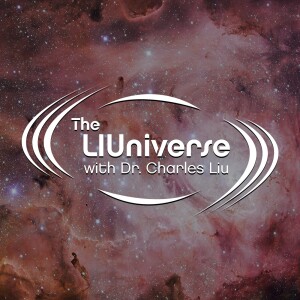
Saturday Feb 18, 2023
Space Telescopes with Dr. Alexandra Greenbaum
Are we living in a golden age of space telescopes? As our minds are being collectively blown by the images of our universe beginning to come from the JWST, our host Dr. Charles Liu and co-host Allen Liu explore the next space telescope on the horizon, the Nancy Grace Roman Space Telescope, with our guest, astronomer Dr. Alexandra Greenbaum, PhD.
Dr. Greenbaum is an astronomer at Caltech working on the NGRST, which is set to launch in 2027. Named after Nancy Roman, who created NASA's space astronomy program and is known to many as the “Mother of Hubble,” it’s a NASA observatory designed to unravel the secrets of dark energy and dark matter, search for and image exoplanets, and explore many topics in infrared astrophysics.
As always, though, we jump into the day’s joyfully cool cosmic thing, the incredible first picture of Sagittarius A Star, (Sgr A*), the supermassive black hole at the center of our Milky Way galaxy taken by the Event Horizon Telescope. Dr. Greenbaum explains that the EHT uses signals from many telescopes around the world to gather the data that is combined into images like this stunning photo.
Alexandra works at IPAC, the Infrared Processing and Analysis Center at Caltech, on the Roman Telescope’s coronagraph instrument, which is going to pave the way for future space photography of exoplanets. The coronagraph eliminates the glare that stars produce and allows astronomers to directly image planets in orbit around them. It will be far more powerful than any other coronagraph ever flown, seeing planets that are almost a billion times fainter than their host star.
Our first question this week comes from Isaac, who asks how the JWST differs from the Hubble. Dr. Greenbaum explains how the JWST’s mirror is made of 18 different mirror segments, whereas Hubble has a single mirror. Also, JWST is an infrared telescope, while Hubble functions primarily with the optical and ultraviolet portions of the spectrum. That means that JWST can see the light from stars stretching back to the earliest periods of our universe.
Chuck and Alex also discuss how the NGRST differs from Hubble and the JWST. It primarily features a wide-field instrument that can look at a huge portion of the sky with different kinds of detectors. The coronagraph instrument is actually a technology demonstration that will help us develop the optical systems to see planets that are otherwise obscured by the overpowering light of the sun they orbit. Dr. Greenbaum also worked on the JWST, and she explains how each one worked to remove solar interference from planets or brown dwarfs orbiting stars.
For our second question, Jayla from North Andover wants to know what’s most exciting about Alexandra’s job as an astronomer. She describes traveling to telescopes all around the world as an observational astronomer before the pandemic, and how wonderfully open and collaborative the field of astronomy is.
Last but not least, Chuck, Alexandra, and Allen talk about what she’s just read: “Parable of the Sower” by Octavia E. Butler, and how that book helped strengthen her commitment to her career studying the universe.
If you’d like to know more about Dr. Greenbaum’s work and keep up on the developments with the Nancy Grace Roman Space Telescope, you can check out roman.ipac.caltech.edu.
We hope you enjoy this episode of The LIUniverse, and, if you do, please support us on Patreon.
No comments yet. Be the first to say something!